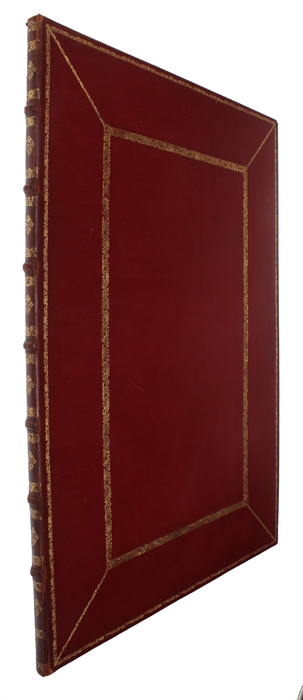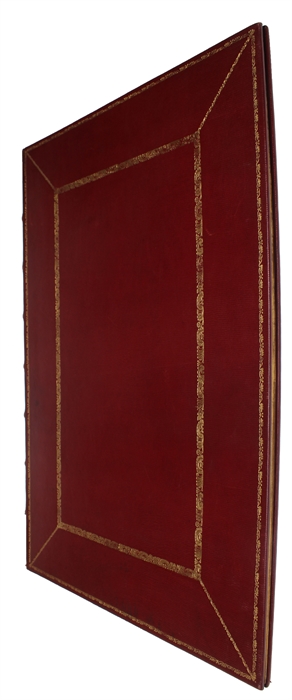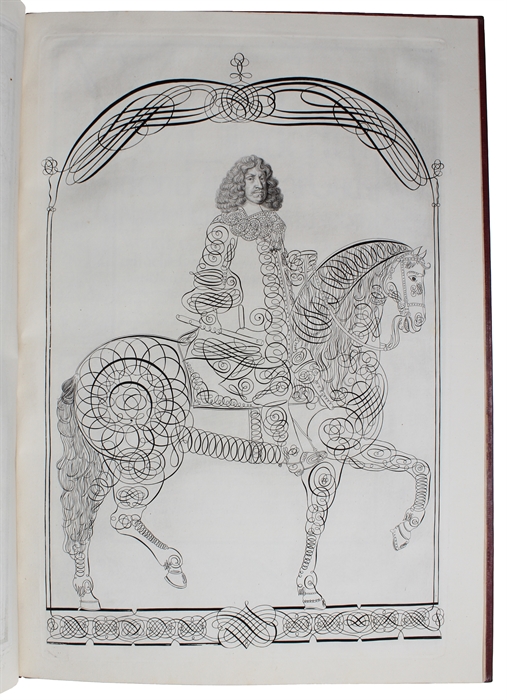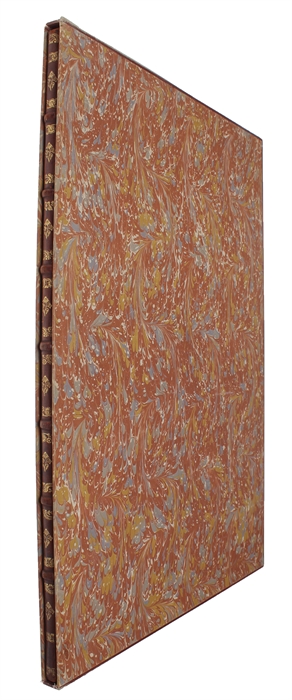THE ABSOLUTE LAW OF THE MONARCH - WITH AN INTERESTING PROVENANCE
LEX REGIA - KONGELOVEN - THE ROYAL LAW.
Lex Regia Det er: Den Souveraine Konge=Lov, sat og given af den Stormegtigste Höibaarne Fyrste og Herre Herr Fridrich Den tredie...og Hans Maj. underskreven d. 14. Novemb. 1665. Som...Friderich den Fierde...Allernaadigst haver befalet ved offentlig Tryk at vorde publiceret...den fierde Septemb. Aar 1709.
(Copenhagen, 1709)
Folio (535 x 385 mm). In a magnificent long-grained full calf pastiche binding (from early 20th century) by Anker Kyster with gilt spine and gilt frames to boards. All edges gilt. 19 leaves; text and frames engraved. The broad frames that all differ from each other ornamentally depict animals and plants as well as the different trades of the country. With gift-inscription to front free end-paper: "Til C. Th. Zahle / - I haabet om snart at se dette navn / under den souveraine folke=lov - / given af [illegible] / August 1913". Housed in a slipcase. A very fine copy.
First edition of this monumental work in Danish book production, a superb, if not the finest, example of eighteenth-century book art. Furthermore, it constitutes the erection of the absolute monarchy - The monarchical moment marks a significant turning-point, not only in seventeenth-century political and constitutional history, but also in the history of early modern Danish political thought. The absolute monarchy, first presented to the public with the present publication, was not abolished until 1848 with a peaceful revolution after the death of Christian VIII. The present copy has belonged to Carl Theodor Zahle, Prime Minister of Denmark from 1909 to 1910 and again from 1913 to 1920 and Minister of Justice from 1929-1935. In 1665, five years after the actual monarchical revolution, the constitutional and political justification of hereditary and absolute monarchy was spelled out in the Lex Regia, the crown jewel of the absolute monarchy. “A renaissance monarchy had fallen, and from the ashes of the former aristocratic society, Frederik III was reborn as an ideal absolute ruler, the only contemporary European monarch to govern by an absolutist constitution. What had begun as a political revolution in Copenhagen soon affected the entire Danish empire. By 1662, the estates in Denmark, Norway, Iceland and the Faroe Islands had signed a document consenting to the revolutionary changes in the form of government.” “The Kongelov is dated and subscribed the 14th of November 1665, but was kept a profound secret, only two initiated persons knowing of its existence until after the death of Frederick III, one of them being Kristoffer Gabel, the king's chief intermediary during the revolution, and the other the author and custodian of the Kongelov, Secretary Peder Schumacher Griffenfeldt.” (Encyclopedia Britannica) This lavish 1709-edition was its impressive proclamation. “This document is in every way unique. In the first place it is remarkable for its literary excellence. Compared with the barbarous macaronic jargon of the contemporary official language it shines forth as a masterpiece of pure, pithy and original Danish. Still more remarkable are the tone and tenor of this royal law. The Kongelov has the highly dubious honour of being the one written law in the civilized world which fearlessly carries out absolutism to the last consequences. The monarchy is declared to owe its origin to the surrender of the supreme authority by the Estates to the king. The maintenance of the indivisibility of the realm and of the Christian faith according to the Augsburg Confession, and the observance of the Kongelev itself, are now the sole obligations binding upon the king. The supreme spiritual authority also is now claimed the moment he ascends the throne, crown and sceptre belong to him by right” (Bain, Scandinavia A Political History of Denmark, Norway and Sweden from 1512 to 1900). In the beginning of the 18th century it became the fashion to print entire books using copperplates. The edition opens with a beautiful portrait of king Frederik III on horseback, the head of which was realized after the death mask of the regent, whereas the lower part was brought by as a unique calligraphic exercise. Each page has the text surrounded by an ornamental frame which shows different animals symbolizing the countries in which the law was in force. Biblioteca Danica II, 739.
The 500 copies of the King’s Law were meant to be distributed, not to be sold. The publisher was Frederik Rostgaard (1671-1745), state archivist and collector of books. He was appointed to the task by King Frederik IV. The text was engraved by Michael Røg, the illustrations and ornaments by Andreas Reinhardt, using designs by Claus Møinichen.
Birkelund 76.
Order-nr.: 60408






